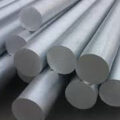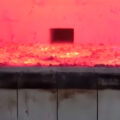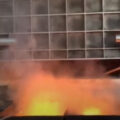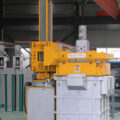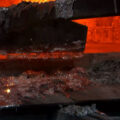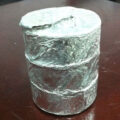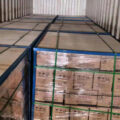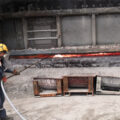Impurity elements refining in molten aluminum is removing iron and other impurity elements. Iron is the main impurity element in aluminum alloy. In the 6063 alloy, the national standard stipulates that it is not more than 0.35. If first-class industrial aluminum ingots are used in production, the iron content can generally be controlled below 0.25. However, if in order to reduce production costs, large amounts of recycled aluminum or other external aluminum are used, iron will easily exceed the standard. Refining flux is usually used for impurity elements refining.

There are two forms of Fe in aluminum, one is the β phase with needle-like structure (Al9Fe2si2), and the other is α phase with granular structure (Al12Fe3si). Different phase structures have different effects on aluminum alloys. The β phase of the flaky structure is much more destructive than the α phase of the granular structure. The β phase can make the surface of the aluminum profile rough, the mechanical properties, and the corrosion After the surface of the profile is blue, the gloss is reduced, and the pure color can not be obtained after coloring, so the iron content must be controlled.
In order to reduce the harmful effects of iron and achieve the impurity elements refining, the following measures can be taken:
- All tools used for smelting and foundry are coated with rinse-off paint before use, which can reduce the dissolution of iron into molten aluminum.
- Refine the grains, make the iron phase finer and smaller, and reduce its harmful effects.
- Add an appropriate amount of strontium to transform the β phase into the α phase and reduce its harmful effects.
- Careful selection of waste materials, as far as possible to reduce iron wires, nails, iron filings, and other debris into the aluminum melting furnace, resulting in increased iron content.
Influence of Other Impurity Elements
Other impurity elements in electrolytic aluminum ingots are lower than the national standard, and may exceed the standard when using recycled waste aluminum. In the production process, each element must be controlled not to exceed the standard, and the total amount of impurity elements must not exceed the standard. When the content of a single element does not exceed the standard, but the total amount exceeds the standard, these impurity elements also have a great influence on the quality. Practice has proved that when the zinc content reaches 0.05, white spots appear on the surface of the profile after oxidation, so the zinc content should be controlled below 0.05.

